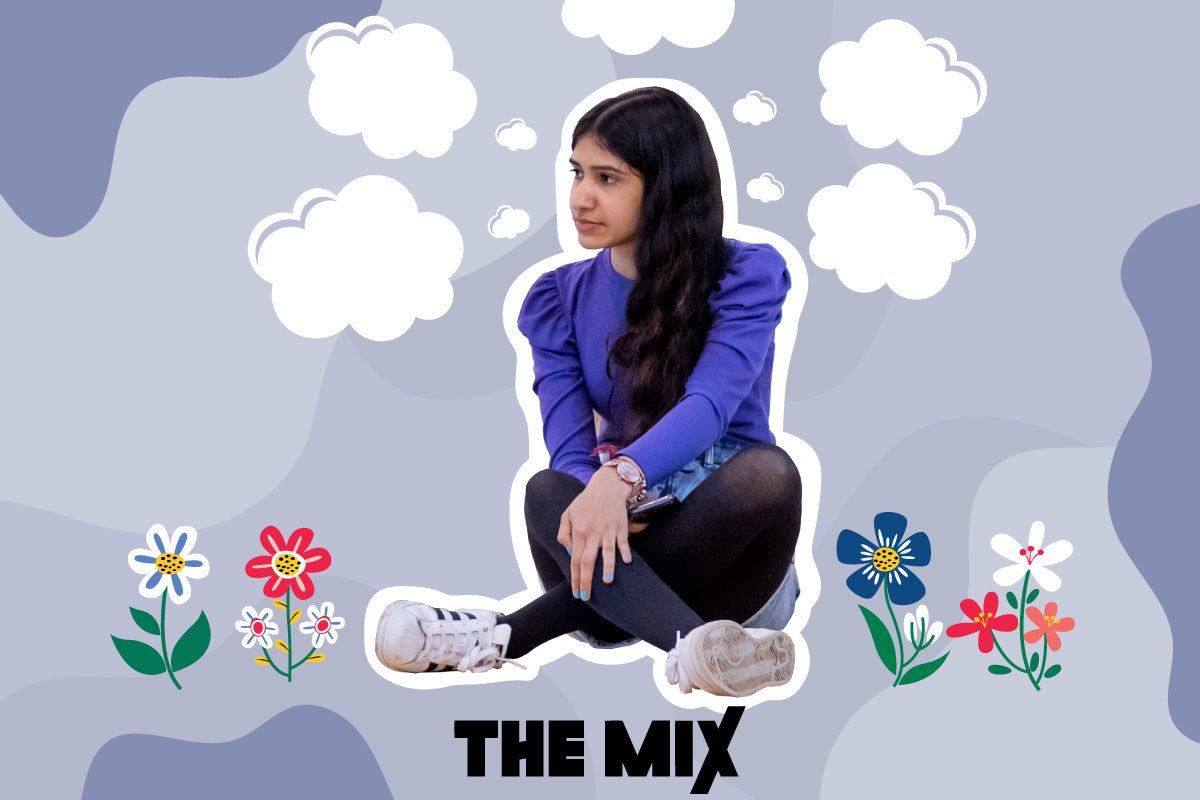How to be happy

My name is Maria Sharp. I study English Literature, German and Law. I am delighted to work with The Mix to help make reliable mental health resources widely available to young people.
How can I be happy?
Before we dive into how to be happier, it’s important to remember that you don’t have to be happy or positive all the time. Everyone gets sad or angry or confused sometimes; it’s healthy to feel a variety of emotions.
The easiest way to be happier, is to create little moments of joy in your everyday life.
A cheap and quick way to treat yourself is to do something that engages your senses. You could:
- Turn on some fairy lights
- Play music
- Light a scented candle
- Enjoy a cup of tea
- Wear your comfiest lounge wear
- Or all of the above!
Side note: If, like me, you’re neurodivergent or are prone to feeling overwhelmed, avoid engaging all your senses at once. You may become over-stimulated.
Once you start experiencing daily moments of happiness, you can begin to work towards feeling content in all aspects of your life.
For now though, let’s take it one step at a time. Read on to explore how different cultures create little moments of pleasure in everyday life.
Happiness in different cultures
What does dolce far niente mean?
I wanted to start with an Italian concept that’s very close to my heart and a philosophy my dad shared with me during a dark time in our lives.
Country: Italy
Translation: It literally translates “sweet nothing”.
Explanation: I guess in English, “dolce far niente” is like having a “lazy day” but without the negative connotations. It’s just chill time where the only purpose is fun and relaxation.
Moral: It’s all about enjoying a little indulgence, guilt free. You don’t have to treat free time as a reward for hard work, instead take a leaf out of Italy’s book and approach it as an integral part of everyday life.
Activities:
- Reconnect with nature
- Get creative
- Bake and eat a delicious dessert
- Binge Netflix or NOW
What is hygge?
Country: Denmark/Norway
Translation: There is no direct translation.
Explanation: It basically means the art of creating a cosy and comfortable atmosphere. Traditionally, it’s a winter concept; sort of like how we might feel when we’re drinking a hot chocolate and it’s snowing outside. But, I think a “hyggeligt” atmosphere can be created anytime of the year!
Activities:
- Light a scented candle
- Snuggle up under a fluffy blanket
- Enjoy your favourite hot beverage
- Get nostalgic and make a blanket fort!
What is sati?
“Sati” is a brilliant concept to help you understand your emotions. The activity below might not make you feel “happy”, but it could help you feel negative emotions a lot less often.
Country: Nepal
Translation: “Sati” is a Pali word that loosely translates to “attention” or “awareness”. It’s the first of the seven factors of awakening in Buddhism.
Explanation: Don’t worry if you have no idea what any of that meant. The concept of “Sati” can be simplified. Essentially, it means paying attention to your thoughts and feelings.
I bet you’re thinking that you already pay attention to your thoughts and feelings. But do you?
What do you do when you feel an unpleasant emotion? Most of us have been taught to try to distract ourselves. Or maybe you blame it on something or someone else. Maybe you chastise yourself? That’s ok; we’re all guilty of playing the blame game sometimes.
I understand how scary your own brain can be. But, you don’t have to be afraid of your own thoughts and feelings because you have the power to understand and change them. This is how I make sense of my emotions when I feel overwhelmed.
Activities: I find it helpful to write my answers down. After you have made sense of your emotions, simply move on.
Next time you feel an unpleasant emotion ask yourself:
- What was going on that made me feel this way?
- What are my thoughts and/or the images in my mind?
- What am I feeling? What was my physical reaction?
Rate this feeling on a scale of 1-10, in terms of how strongly you felt it.
- What did I do in response to this feeling and thought? How can I handle this feeling better next time? What coping strategy can I use?
Good luck! Have fun, and above all, remember to be compassionate to yourself.
For more tips on looking after yourself, read Maria’s guide to creating a Mental Health First Aid Box.
View this post on Instagram
Next Steps
- Chat about this subject on our Discussion Boards.
By Holly Turner
Updated on 25-May-2021
Sorry, comments closed
No featured article






